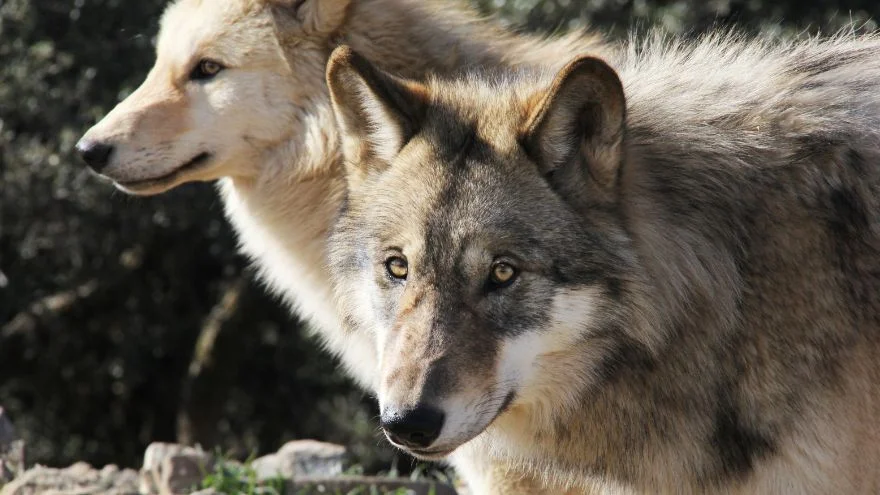Wolves are complex land mammals from the Canidae family known for their intelligence and fierceness.
These wild dogs come in fascinating colors that contribute to their appearance.
More interestingly, they use their coat coloration as camouflage, which allows them to blend with their surroundings while hunting for prey or hiding from predators.
Wolves come in a variety of coat colors including black, gray, red, yellow, brown, or any combination of these colors. Wolf colors differ based on species and geographical location, and while some wolves have a single color, some are a mixture of colors.
What Colors Can Wolves Be?
Red Wolf
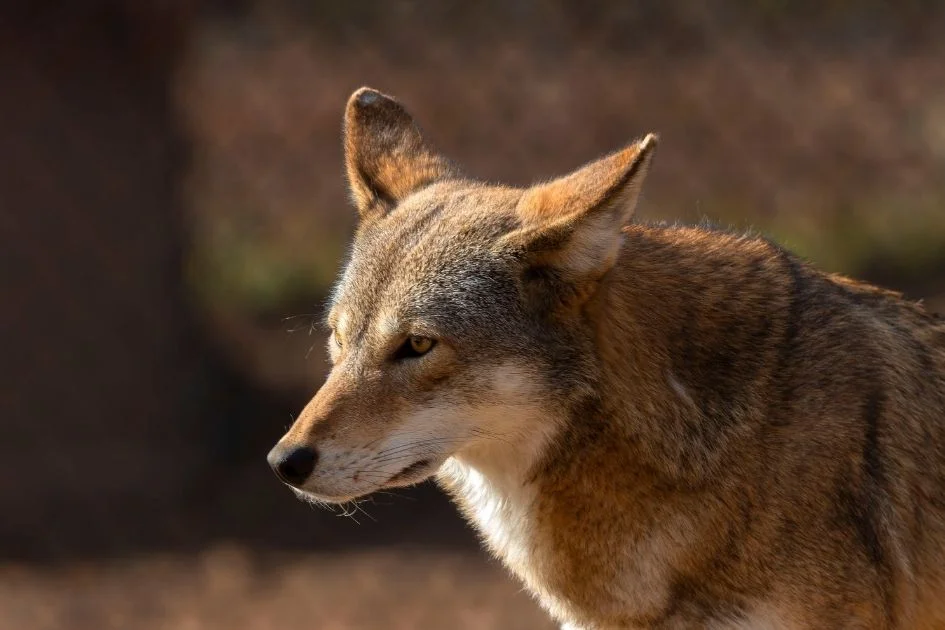
The red wolf (Canis lupus Rufus) is the rarest among all wolf colors and is among the rarest animal species worldwide.
These almost extinct wolves have three subspecies: Texas red wolf, Florida black wolf, and Mississippi red wolf.
Out of all its subspecies, the Texas red wolf is the only one still in existence.
Like many wolves, this wolf species has a mixture of red, brown, and gray on its head and sides with a red coat on the legs, and chest.
The red wolves are natives of the Southeastern United States; in the past, they’ve been seen from Texas to Florida up to Pennsylvania with North Carolina as the last place which there have been present in the wild.
These animals inhabit marshy areas, farmland, and coastal prairies and live up to 7 years in the wild and 15 years in captivity.
The red wolves are the most endangered of all species; there are less than 35 red wild wolves and more than 200 in captivity.
Gray Wolf

The gray wolf (Canis lupus) is the largest living wild dog species.
These wolves have numerous subspecies, some of which include: the great plains wolf, Eastern Timberlake wolf, Arctic wolf, and Mexican wolf.
These recovering endangered species have gray-colored coats with blacked-tipped and long, bushy tails.
The gray wolves are among the most widespread terrestrial animals inhabiting woodlands, tundra, forests, and deserts.
Gray wolf coat colors are animals are the most abundant wolf species, with a population of about 200,000 to 250,000; they’re present in North America, Asia, Europe, and a small part of Africa.
They have many special adaptations: their wooly fur coat provides warmth and the long guard hairs keep moisture.
Gray wolves also have fleshy pads and claws on their paws, which can be spread to provide more support in the snow.
The average lifespan of these wolves in the wild is about six to eight years and they can live up to 16 years in captivity.
White Wolf
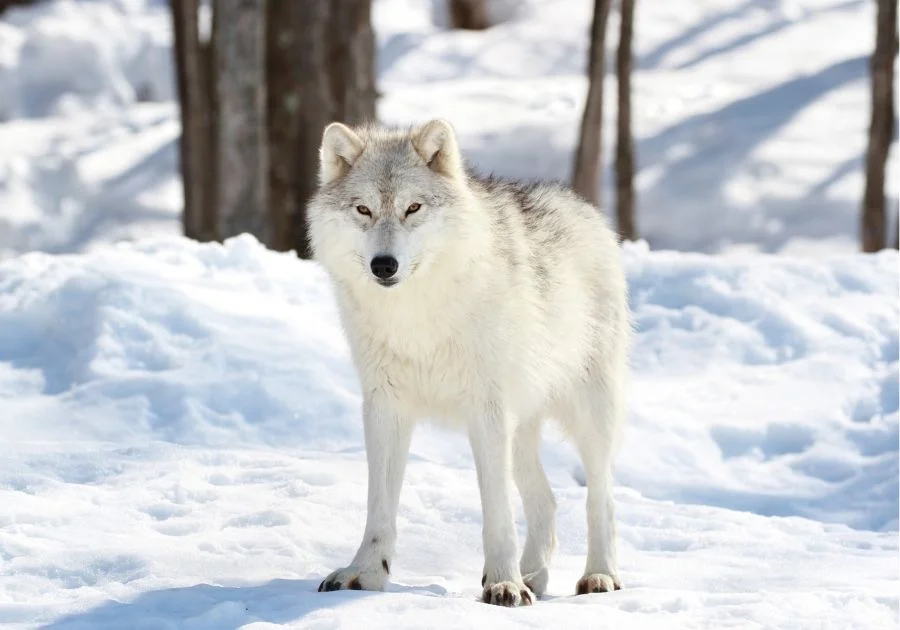
The Arctic wolf (Canis lupus arcticus) is often referred to as the white wolf because of its coat color.
White wolves are subspecies of gray wolves located in Greenland, Iceland, Canada, and Alaska.
Because of the regions which they inhabit, these species adapt to living in the dark and cold regions, instead of living in dens.
Also, they live in caves and have double-layer coats; the upper layer of their coat gets thicker during fall in the tundra while the second layer is waterproof and helps them stay dry and maintain body warmth in cold weather.
They also have small ears to maintain body warmth and thickly padded paws to allow them to walk on ice and give them traction on slippery surfaces.
The white wolves have a lifespan of about seven to ten years in the wild and can live up to 18 years in captivity.
There are about 200,000 white wolf population, so they are not considered a threatened species as they live in very cold regions away from humans and other animals.
Black Wolf
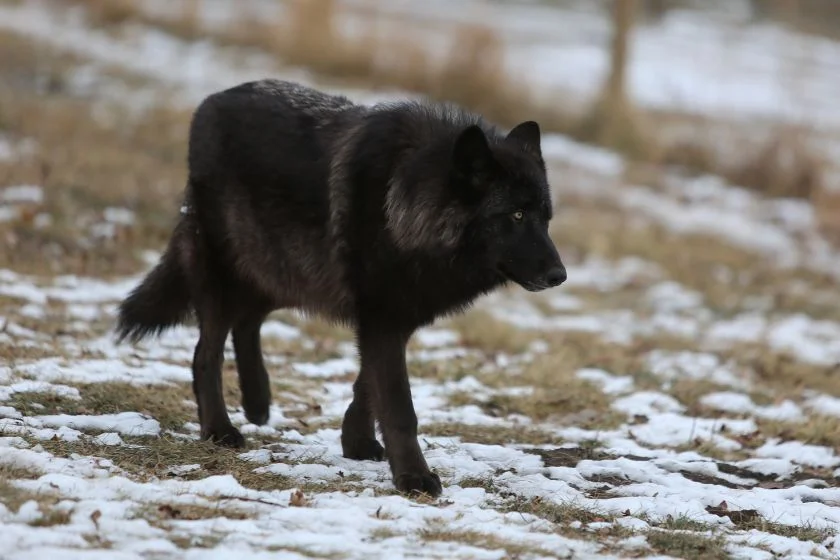
Black wolves are other members of the gray wolf species and are believed to have existed over the years due to the hybridization between wolves and dogs with black coats.
The black-colored coats in some wolves have greatly benefited their habitats as they blend with their surroundings easily when hiding or hunting.
Furthermore, black wolves are similar in physical features to the white and gray wolves, including thick fur to maintain body warmth, and only differ with the black-colored coat.
These black wolves only range in North America with over 2,000 populations; the mating between wild and domestic dogs didn’t give rise to black wolves in Europe and Asia as they mainly inhabit the woodlands.
Brown Wolf
Wolves also appear in brown coat colors but more like grayish brown, and this color mix is quite common.
Brown-coated wolves live in the woodlands, and their coat color helps them blend with the surroundings when hiding from threats and hunting for prey.
These wolves are generally found in North America and Europe, and the intensity of the brown coat differs based on their exposure to the sun and habitat.
Yellow Wolf
The African wolf (Canis lupaster) is also known as the yellow wolf or the African golden wolf.
These species of wolves have a very near yellow coloration; the intensity of the color varies from yellow to golden and brown.
While most wolves are gray, brown, and white colors, the yellow-colored wolves have a more distinct appearance; they also have yellow eyes and yellow pupils.
These wolves have a variety of subspecies and are natives of North Africa, West Africa, and Northeast Africa.
Their yellow coats are greatly beneficial and serve as camouflage while hunting in deserts, grasslands, shrublands, and woodlands. They have a life span chart of about eight years in the wild.
A Mixture of White, Gray, Black, and Brown
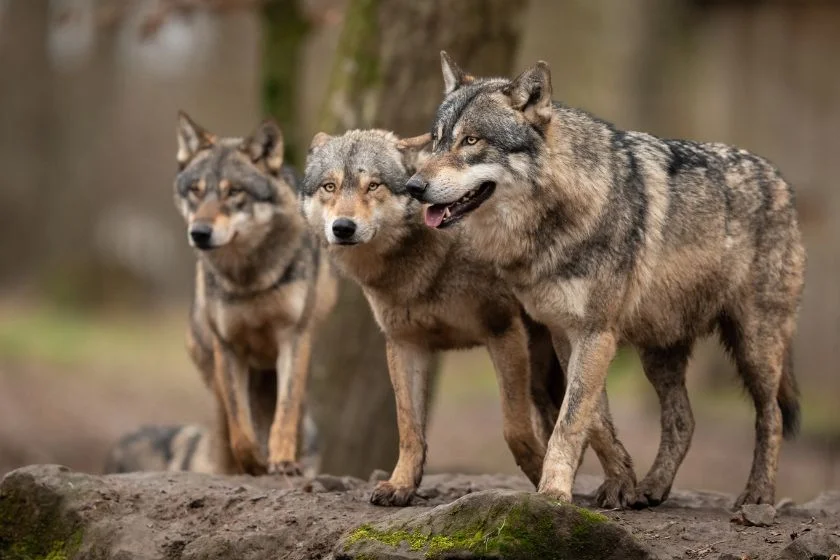
Most species of wolves have a color mixture of gray, white, black, and brown coats.
Examples are gray wolves, which have black and white markings, and gray wolves with brown spots.
Some wolf furs usually combine these colors, and while gray and brown are very common in the pack of wolves, white is usually seen in their underparts and head sides.
What Does a Wolf Color Mean?
The color of a wolf reflects and influences its physical adaptation. The physical adaptation is known as camouflage behavior, depending on where the wolf resides in its territory.
The variations in their coat color make it easy for them to blend with their surroundings to hide from their predators and prevent being spotted by prey when hunting.
For instance, wild wolves in forests are dark colored to easily hide among trees, while the ones in snowy areas like arctic wolves are light-colored.
Related Questions
What is the rarest wolf color?
The red wolf is the rarest coat color; only about 0.0001% of wild wolves are of this color. Red wolves are also the most endangered species of wolves and almost went to extinction in the middle of the 20th century.
It was originally present around North America from Pennsylvania to Florida and Texas, but now they’re only found in the wild in the Alligator River National Wildlife Refuge in Eastern North Carolina.
What is the rarest wolf eye color?
The rarest eye color for wolves is green because it only exists in a few wolf species.
Wolves pass through a phase of having green eyes for a short time before the wolf’s eye takes on its permanent color. Most wolves have yellow eyes; while blue and black eyes also exist, it is not common.
Conclusion
Wolves come in different colors, and while gray, white, and brown are common amongst them, a number of wolves also have a mix of these different colors, but red, yellow and black are not as common.
The color varieties in wolves add to their attractiveness and greatly benefit them when hiding from predators and hunting prey in their natural habitat.
